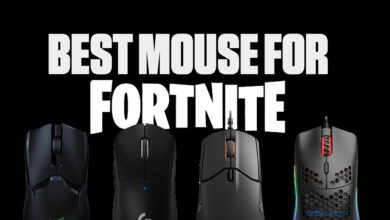CORSAIR Harpoon RGB Gaming Mouse Review
With the gaming market evolving and growing more rapidly than ever before, gamers are much more aware of what they ought to know about a product. Additionally, we’ve seen gamers rise up to the challenge with styles never seen before. Computer peripheral companies are now rapidly putting out products that cater to all sorts of gamers so no one is left out. CORSAIR is a name well known by now and they’ve asserted their dominance a number of times. From peripherals to water-cooling components and cases, their market is wide.
PRODUCT INFO CORSAIR Harpoon RGB Gaming Mouse Manufacture Corsair Available at View at Amazon
Whenever a peripheral has the “gaming” prefix attached to it, the stigma of it automatically being an expensive product is raised. With the Harpoon mouse, CORSAIR aimed towards their fans on a budget yet still making sure that it had as little cutbacks as possible. So today, we’re reviewing the CORSAIR Harpoon gaming mouse which is for the gamers on a tight budget that still do not want to miss out on the features that come with more premium models such as RGB and precision tracking. Let’s dive in and see if it lives up to its excellence or not!
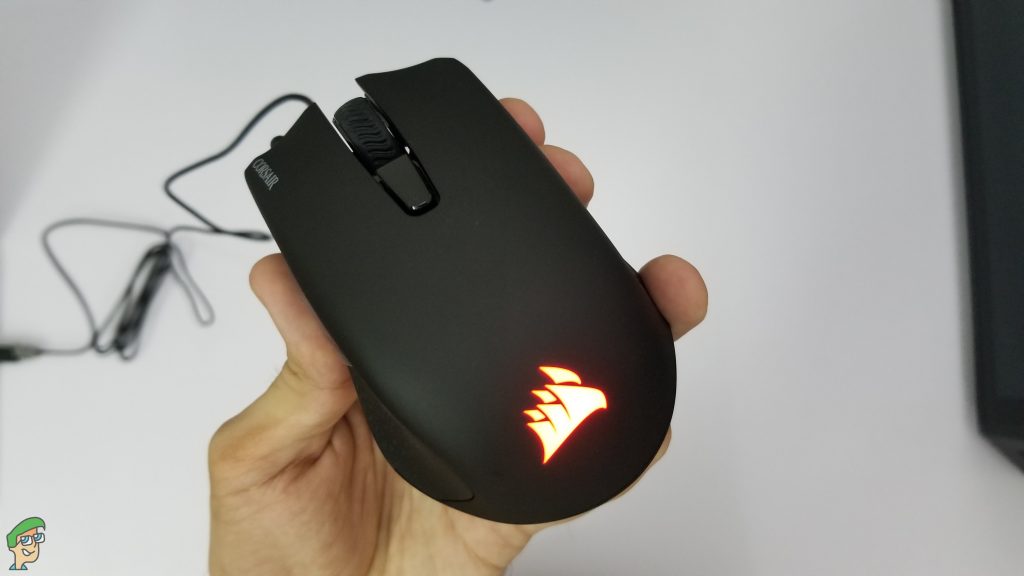
Pricing and Availability
The CORSAIR Harpoon is tagged for a price of $30 in the US and about £35 in the UK. CORSAIR often releases more than one variants for their peripherals. Following that trend, the Harpoon comes in a wired, wired Pro and a wireless model. The Pro and wireless variants come in at about $40 and $50 respectively. The standard variant has a 6000 DPI optical sensor whereas the Pro and wireless have 12000 and 10000 DPI sensors.
Unboxing
The Harpoon, being a rather compact mouse, comes in a small and tight little box with CORSAIR’s signature black and yellow colour scheme. A picture of the mouse is printed on both the front and the back with a glossy print.
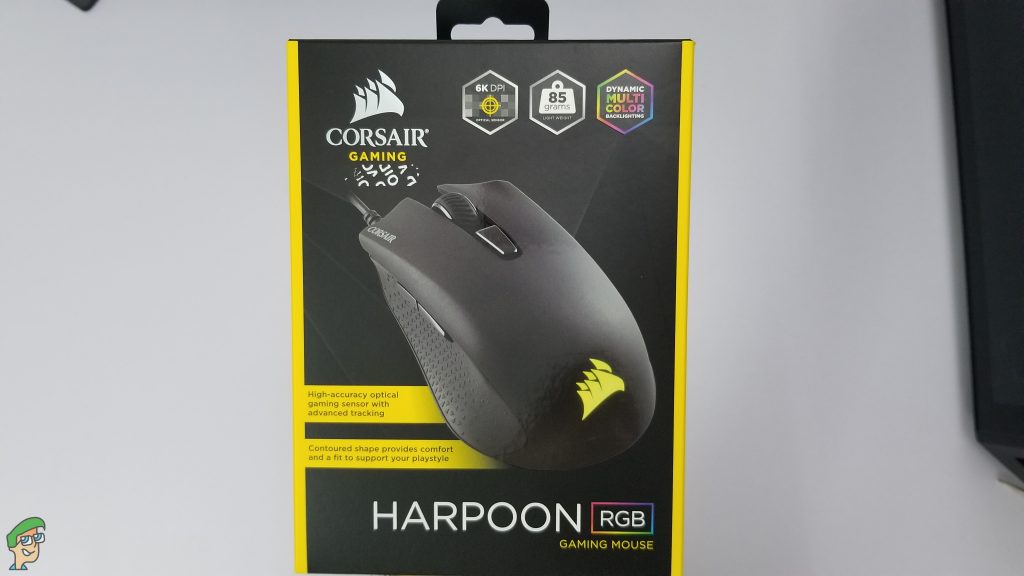
As usual, the box showcases some of the specs of the product- including DPI range, weight and switch lifetime. The bottom side will have CORSAIR’s official sticker with barcodes and a unique product tag.
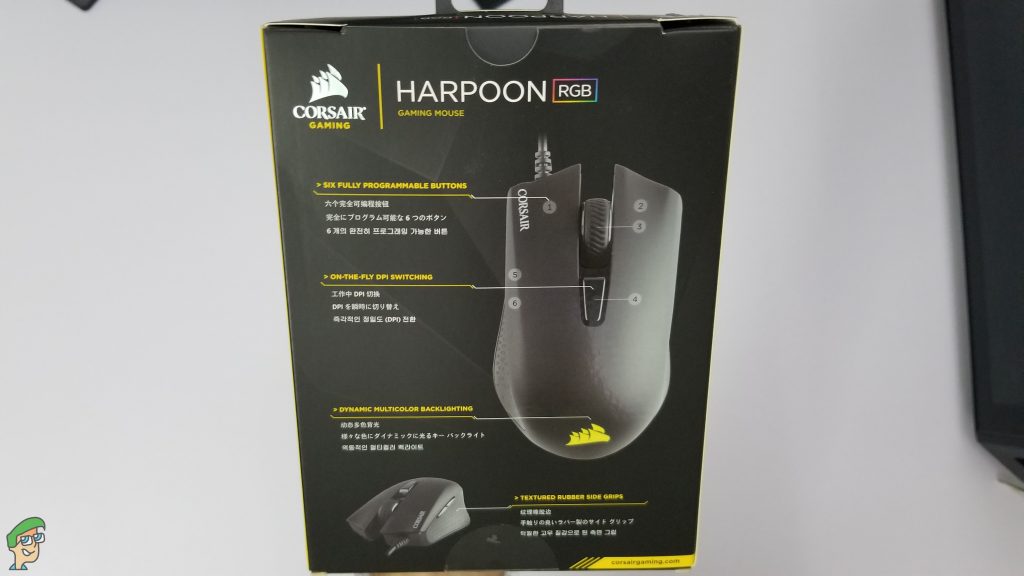
Cut the tape on the sides and you’ll slide out the Harpoon out of its box. Along with the mouse, CORSAIR provides you with a warranty guide, instructions on how to claim warranty and a little booklet for a tour of the Harpoon. Pull up the plastic cover there it will be — your $30 RGB gaming mouse.

The box contents are:
- Corsair Harpoon mouse
- User Manual
- Warranty Guide
Taking a closer look at the design and build
The CORSAIR Harpoon is quite a small mouse. Weighing in at just 85g and measuring 4.54 x 2.69 x 1.59 “, the Harpoon gracefully sits back behind the more heavy and dominating mice such as the Logitech G-series mice. This mouse has a 2-part body with the plastic being separated for the side grips. Nonetheless, the feel is still premium with CORSAIR leaving no room for any flimsy parts.

With the Harpoon’s concave shape and roughly textured plastic, you’ll either brand its design as too dull and plain or understated elegance. I used the Harpoon continuously for hours and my hands did not get sweaty over the surface’s touch. Moreover, the Harpoon had no signs or markings of handprints and I quite like that. Quite often, I find that my handprints have stuck to the surface of the mouse and I need to rub them off. This speaks to the quality of the plastic that the Harpoon entertains.
It is a 6 button mouse which includes 2 side buttons, a DPI button, 2 mouse buttons, and a scroll button. The Harpoon is a mouse for right-handed folks so the curve of the side grips is oriented towards that. The right side of the mouse curves outward toward the base with a little ledge around the base. The ledge is there to keep your fingers above the mouse pad. Similarly, the left side too has a curve for the thumb to keep it from touching the pad. I have two problems with these curves.
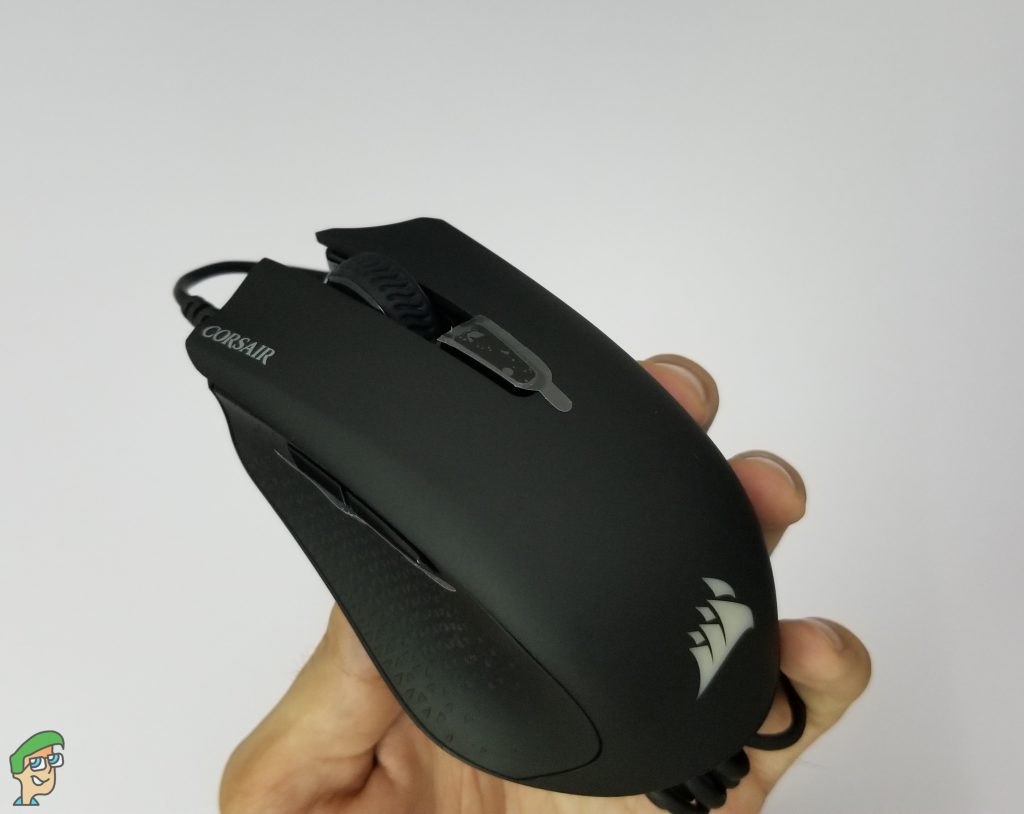
Due to the curve on the left, I noticed my thumb sliding upwards if I pressed on the mouse too hard. The diamond textured grips just weren’t enough to prevent that. And for the right side, while the idea behind the ledge is good, I just don’t think it was executed properly. The size of the Harpoon makes it a smaller mouse compared to some on the market. However, the ledge just isn’t playing around that. If your fingers are small enough- then you’ll have no issues with that. If they’re not, you’ll be left with an awkward bump sticking out and will be forced to have your little finger in awkward positions because the size of the mouse just can’t entertain a full grip. I began to take notice of these two things over time and once I did, they just kept being an annoying little quirk that I couldn’t move past. But again, I don’t see this as a con of this mouse because this problem is subjective, your experience may differ.
On the bottom, the Harpoon features 4 PTFE feet taped around the corners. There are no additional PTFE feet provided in the box so you’re stuck with these. You can also see the mouse wheel through the gap between the left and right mouse buttons. The standard wired version which we’re using has a 6000 DPI sensor which can be seen on the bottom.
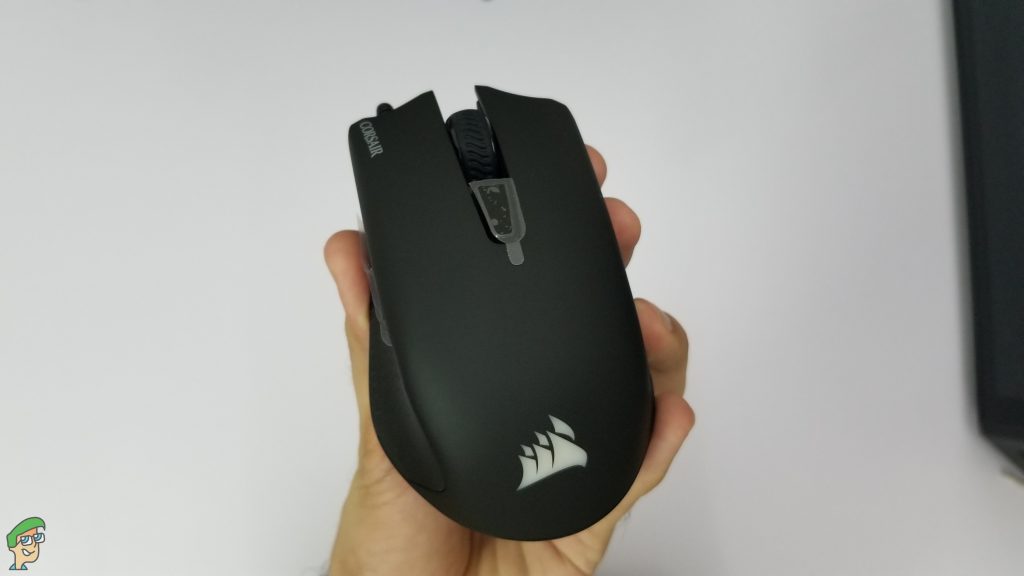
The build quality of the Harpoon raised no concerning bells on my part as I was quite pleased with it. The plastic feels premium and the textured feel on the side grips and the top shell help preserve optimum levels of friction. The only RGB lighting it features hides away when you have your hand on the mouse so that is something you won’t be able to enjoy when gaming. Additionally, readers ought to note that the compact size of the Harpoon might have its downsides depending on the size of the hand. Personally, I did run into more than a few instances where a comfortable grip would’ve helped secure a kill in Overwatch.
Software
Just like any other CORSAIR peripheral, the Harpoon gaming mouse makes use of CORSAIR’s proprietary iCUE software. The Harpoon is primarily a plug and play mouse where it’ll be up and running in no time right when you plug it in your computer for the first time. However, iCUE provides you with an abundance of options which you can use to customize your experience and cater it according to your needs. All pretty much generic and expected out of a CORSAIR gaming mouse.
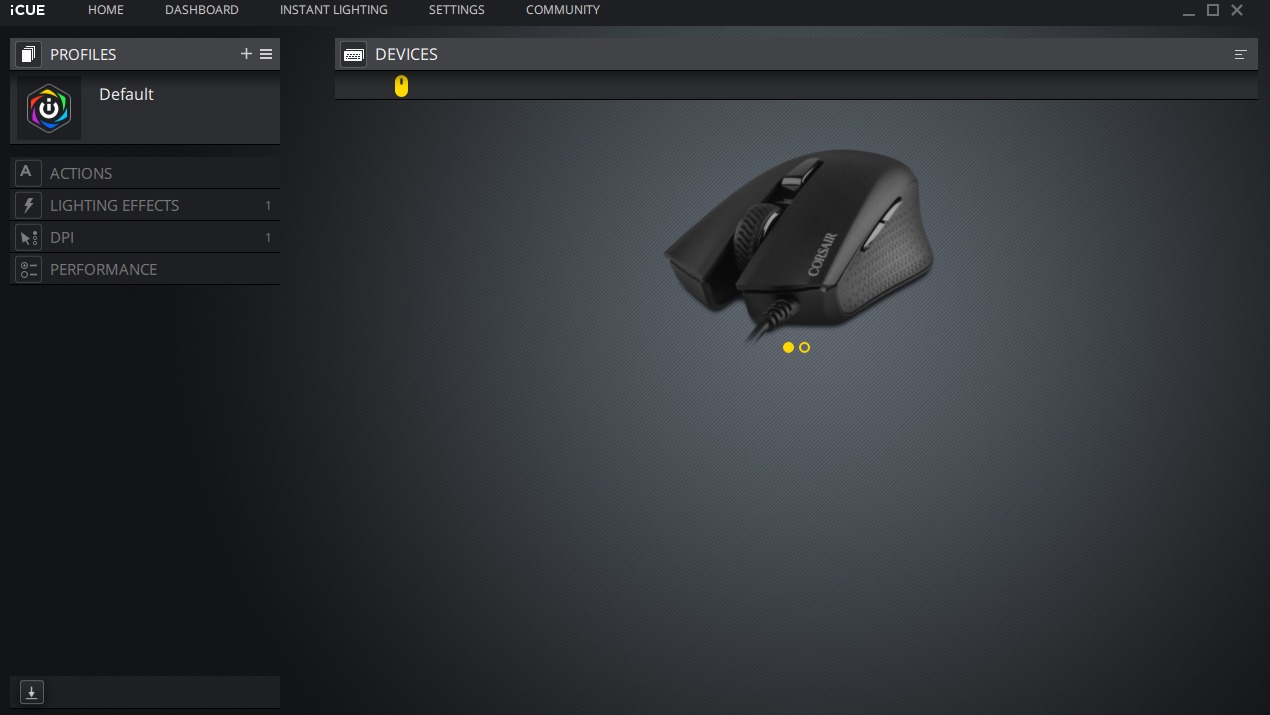
I’ve gotten my hands on a few budget gaming mice over the years and I was relieved to see that Harpoon supports onboard memory. For on-board memory, you have to cross the threshold that labels the mice as a budgeted option. Harpoon does lack that multi-zone RGB flair, but it made up with its on-board memory and thus, the ability to have different profiles. With iCUE, you can customize the keys and reassign them as well as set up different profiles which can be swapped through iCUE. The Harpoon does not have a lot of room for RGB lighting customizations since there is only a single RGB zone. But other than that, everything is pretty decent, and CORSAIR has made sure that you get the same feeling with Harpoon as you get with a more expensive, $50 mouse.

While testing out the different RGB profiles, I ran into a bit of a problem with the “Typing effect” profile. As the name suggests, the Harpoon toggles its RGB zone on and off at the press of a click. Simple enough. But there seems to be a delay of just shy of a second in the RGB zone turning on. As you’ll all know by now, the CUE app lets you sync the rest of your CORSAIR products. I synced my CORSAIR K70 keyboard with the Harpoon and turned on the “Typing effect”. To my dismay, the problem persisted, and the Harpoon lights kept getting lit up with quite a bit of delay. But again, I can’t complain much. Looking at the price tag, at the core, the Harpoon is best at what it is supposed to do.
Performance
Testing the Harpoon and commenting about it can be a bit of a tricky road. Primarily because you will either absolutely adore the Harpoon or simply not like it at all. I’ve run into quite a number of folks who said that the Harpoon is just what they had been looking for. The rather small size of this mouse made it ideal for those folks with small hands. Your entire palm can easily rest atop the Harpoon provided the size is right.

The Harpoon features a PMW 3320 optical sensor with a maximum DPI of 6000. Other more expensive mice have sensors that go much higher than 6000 DPI however, I doubt you’ll be able to properly aim with such high DPI. It did take a little bit of time to get used to my palm not completely sitting on the mouse but I took a shot and tried out the Harpoon out in Overwatch. Once I got used to the Harpoon being quite agile due to its low weight, aiming did not prove to be much of a problem. Keeping enemies in between my crosshairs was simple enough.
Unfortunately, the small size once again, held me back a little because I found precise sniping to be quite difficult. In fact, my wrist also started to grow a bit tired because the positioning just wasn’t doing it for me. I reckon a lot of you gamers will not run into this problem so you need not worry about that. But, my comfort levels with the Harpoon is a bit tainted because of that. I switched things up a bit for myself and tried my hand out with the claw grip and fingertip instead. Luckily, they worked out fine for me and I was finally able to shift my focus to the Omron switches instead of solely the ergonomics.

Just like how I prefer my keyboards to give off satisfying clicks and bumpy feedback at the press of a key, I like my mice to have that too. Harpoon’s Omron switches do nothing short of that. The clicks are not too loud (just how I like it) however they do fail to deliver that tactile feedback that I was able to feel even when fully immersed in hooking enemies as Roadhog. As the polling rate of the Harpoon goes, CORSAIR claims selectable polling rates of 1000/500/250/100 Hz. The polling rate indicates how often the mouse communicates with the computer and tells it its position. So, a 1000Hz polling rate means the mouse is reporting its position every 1ms- and so on. I tested these out and as you can see from the results, the rates were consistent with CORSAIR’s promises.

Additionally, you can also switch between different polling rates through the iCUE app. Go to the “Settings” tab on the top and choose your Harpoon mouse to view the options.
Verdict – Is it right for me?
As with all peripherals, you want to own the one that will be perfect solely for your needs. If a $100 mouse is not giving you the satisfaction that you had hoped for, your money has probably been wasted. The Harpoon is a rather cheap gaming mouse, priced at just $30 but before you invest in it, you should ask yourself if it will be right for your needs.
A responsive mouse with instant feedback is just as important as the design and ergonomics. With the Harpoon being a compact mouse weighing just 85 grams, it can have its ups and downs. I couldn’t find much use of this mouse with a claw grip and I reckon most of the folks out there wouldn’t either. But it’s 2019 and we have seen gamers excel with grips and styles that are rather uncommon. So you ought to keep that in mind when deciding whether the Harpoon is the one for you. CORSAIR has made sure that you get the rich-plastic and customization options that you expect from a more expensive mouse with the $30 Harpoon. I couldn’t get the best out of the Harpoon myself (due to my rather large hands) but I still quite like what CORSAIR has put together. If you do decide to get the Harpoon, give it a few days or so before you’re put off by it. Let the grips, curves and the Omron switches settle in. Who knows, perhaps you might grow into it and the Harpoon might be what had been missing from your overall premium setup.
CORSAIR Harpoon Gaming Mouse
$30 mouse with premium features
Pros
- Textured plastic and side grips provide ample resistance
- Programmable buttons & RGB zone despite being a budgeted mouse
- Omron switches with PMW 3320 optical sensor
Cons
- Small size does not provide enough area for gripping
Weight: 85g | Backlighting: Single RGB Zone | Polling Rate: 1000Hz, 500Hz, 250 Hz, 100Hz | Key Switches: Omron | Programmable Buttons: 6 | DPI: 6000

VERDICT:The Harpoon gaming mouse is intended for the budget-friendly gamers who do not want to miss out on any high-end features. With a solid and sturdy build quality, programmable buttons and varying polling rates, CORSAIR offers you many options to work with without sacrificing much despite the budget. However, the small size of the Harpoon might make it hard to like for some people. Therefore, its fan-base might be a little restricted.
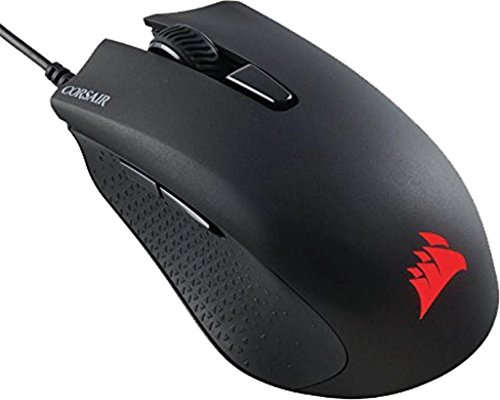
 Check Price
Check Price